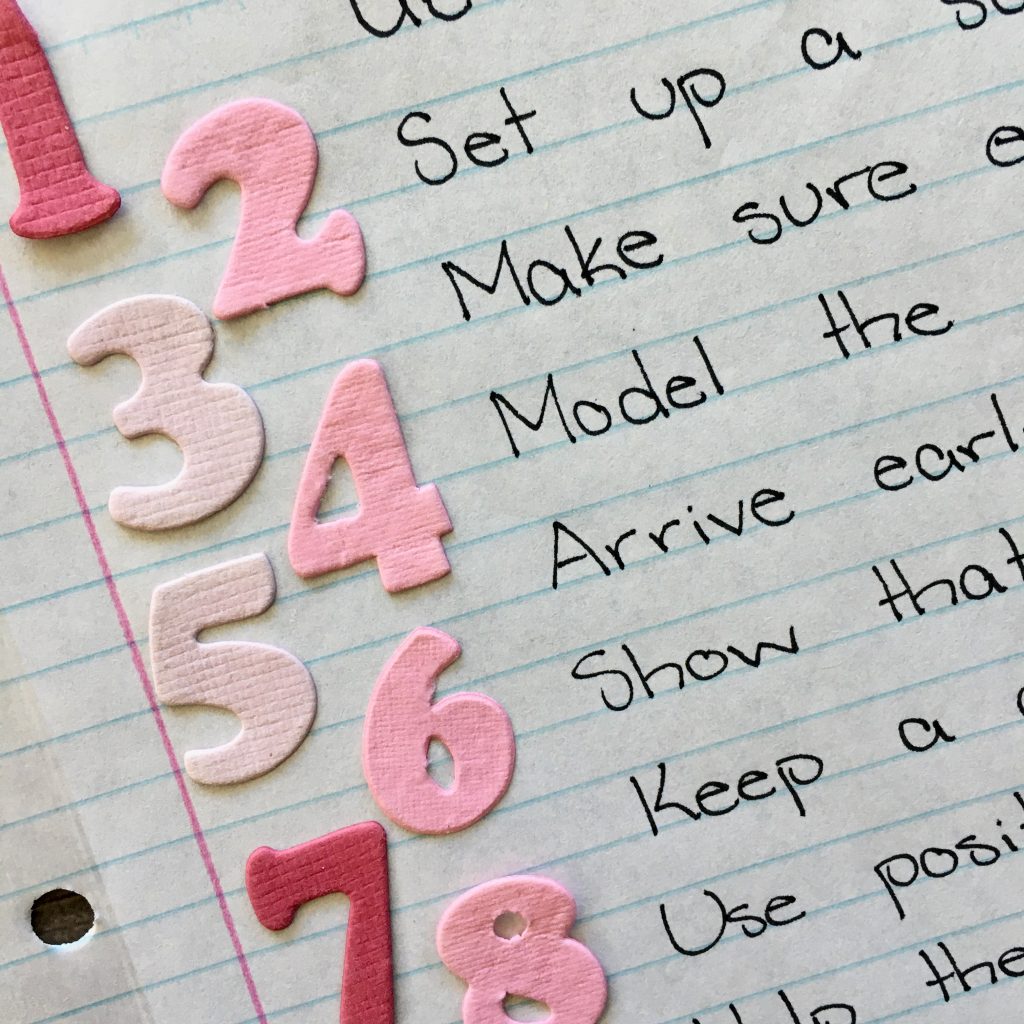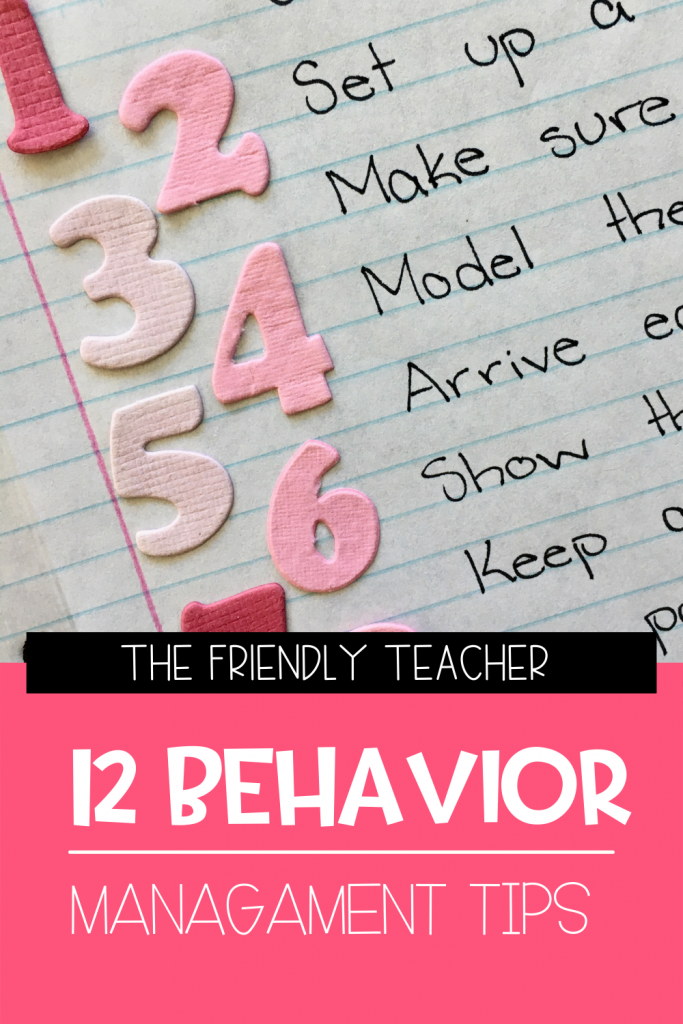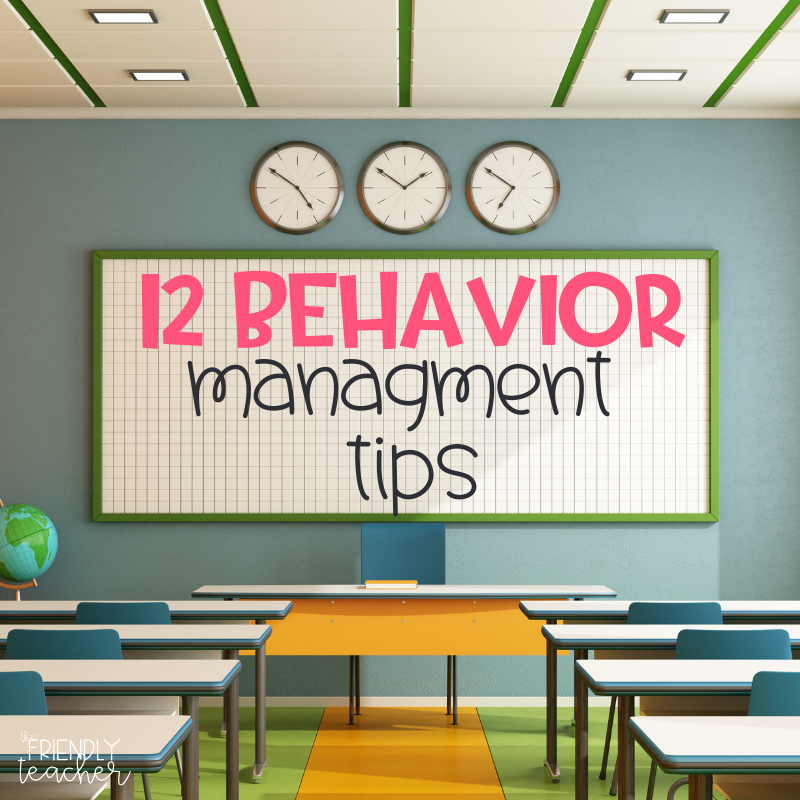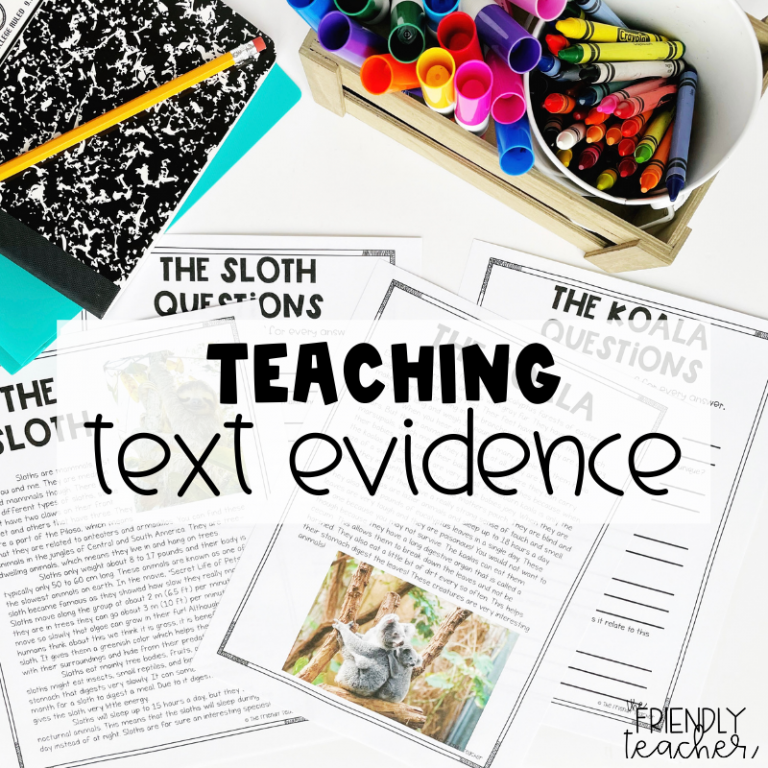One thing that you quickly come to learn as a teacher is that a good behavior management
plan makes all the difference. Using my experiences as a tutor, substitute teacher, and full-
time classroom teacher, I have recorded a collection of tips that I have found helpful for
managing students. I hope this post offers some useful ideas to all the other wonderful
teachers out there who are looking to try some new behavior management strategies.

1) Get to know your students ASAP
I can’t stress this enough. This is a simple thing that makes teaching so much easier from the
start. Pay attention to the things your students share with you, how they interact with
others, and which lessons they’re most engaged in. This will help you get to know how to
connect with them and keep them motivated during lessons.
2) Set up a safe community of learners
Make sure your students feel confident enough to give things a try by setting up a safe
learning space. Let them know that making mistakes is part of the learning process and do
what you can to encourage student participation.
3) Make sure expectations are clearly set
If the students are confused by what is expected of them then they’re more likely to act out.
Make sure you address this from the beginning by clearly letting them know what behavior
you’re looking for.
4) Model the behavior you want from your students
It’s important, as teachers, to lead by example. If we are intentional with the way we speak
to our students, giving eye contact and listening when they share with us, we are modeling
the social behavior we want to see from them. If we have an optimistic attitude towards
learning, then we are giving them a positive example of how to approach their lessons.
5) Arrive early before school to prepare for the day
You don’t want to start the day in a fluster because you were running late. Where possible,
it helps to give yourself a little bit of time in the morning to get things organized and set up
for the day.
6) Show that you are interested in what you’re teaching
Find a way to show that you enjoy and care about what you are teaching. If you’re not
interested, then the kids will find it harder to stay engaged.
7) Keep a calm front and don’t take behavior issues personally
If a student says that your lesson is boring don’t take it personally. It’s hard but important to
keep a calm front instead of reacting out of emotion. If a student sees that their negative
behavior gets a reaction from you, they’ll be more likely to repeat it.
8) Use positive reinforcement
When addressing student behavior, focus on pointing out and rewarding the children who
are doing the right thing, rather than only noticing when students are doing something
wrong. While you will still have to correct students when they choose not to follow your
expectations, setting up an environment focused on celebrating the positive will help keep
most of the kids from disrupting that.
9) Offer to help the more disruptive students
Every class has students who are going to push the boundaries. Often though, these sorts of
behaviors stem from either a lack of confidence or a lack of interest in their schoolwork. If
you make it your aim to go and offer assistance to the more disruptive students at the
beginning of each lesson, you’re not only helping them with their learning, but you’re also
connecting with them personally. Both of these tactics will reduce the likelihood that they’ll
start displaying negative behaviors while you’re teaching.
10) Use brain breaks when children need to let their energy out
Kids gone wild? It might be time for a ‘brain break’. If you have access to YouTube, there are
dozens of dance videos for kids that allow the class a few minutes to get their wriggles out.
Another option is giving the class a couple of minutes of ‘free time’ between lessons. Let
them get their energy out and then you can continue with the lesson.
11) Have some back-up activities up your sleeve in case there is a change of plans
Sometimes things go haywire. The activity you were excited to try fails miserably or the
students are done with everything you had organized in the first 10 minutes of the lesson.
This is when you need to have a back-up plan. There are so many great games and activities
that don’t require any preparation. Have a list of them handy. Things like math games or
brainteasers are ideal. Find what works for you and have it ready to go in case you need it.
12) Keep refining your strategies and learning as you go. No one gets it right all the time.
Remember that teachers are learners too, and that it takes time, practice, and a few
mistakes before you get things right.
Remember…
The work you do is ever so valuable. I know you’re often overlooked, but on behalf of
the teachers and parents of the world – thank you.
This was a guest written blog post by Mrs. T’s Musings
I would love to connect with you! If you’d like more teaching tips and strategies like this, take
a look at my blog here!
Whether you’re wondering how to
navigate narrative writing, looking for free ideas to use for student choice boards, or trying
to find ways to combine English with Math, I have plenty more ideas to share with you!












Hannah Wilde
I am so glad you’re here! I love helping 3rd-5th grade teachers by providing ideas, engaging resources, and professional development they need. I am a literacy coach who is here to help lessen the workload for teachers while making them more confident! I want students to be continually engaged in a rigorous environment!